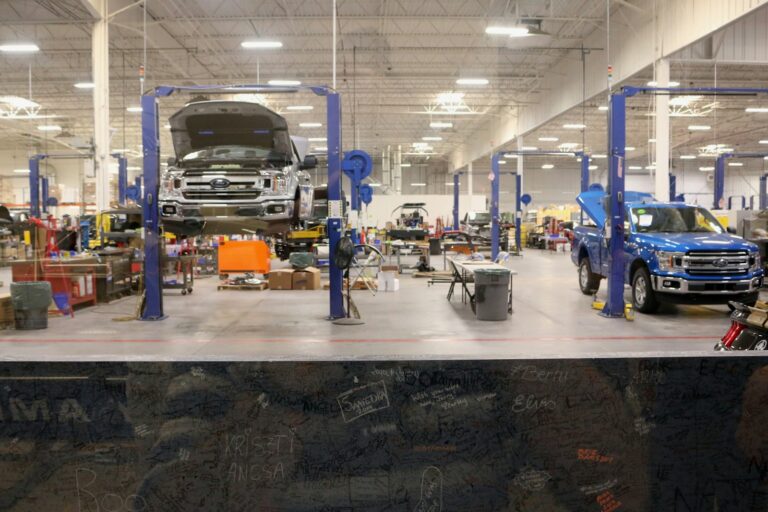How Chip Shortages Are Reshaping the Auto Industry
The global semiconductor shortage has emerged as one of the most significant challenges facing the automotive industry in recent history, triggering changes that extend far beyond temporary production delays. What began as a supply chain disruption during the COVID-19 pandemic has evolved into a catalyst for fundamental industry transformation, forcing automakers to rethink everything from manufacturing processes to vehicle design. With modern vehicles requiring up to 3,000 semiconductors each, the shortage has exposed critical vulnerabilities in traditional automotive supply chains and manufacturing strategies. As we’ll explore, these challenges have sparked innovations and adaptations that are reshaping the future of vehicle production, pushing the industry toward a more resilient and technologically integrated future.

The Immediate Impact on Vehicle Production and Sales
The global semiconductor shortage has sent shockwaves through the automotive industry since early 2020, creating unprecedented challenges for manufacturers and consumers alike. Major automakers including Ford, Toyota, and General Motors have faced significant production disruptions, with some plants operating at just 50-60% capacity throughout 2022. Industry analysts estimate that chip shortages have resulted in 7.7 million fewer vehicles produced globally in 2021 alone, with continuing effects well into 2023.
Production Slowdowns Across Major Manufacturers
At Ford’s Michigan Assembly Plant, production of the highly anticipated Ford Bronco faced multiple week-long shutdowns during its launch phase, while Toyota reduced its global production target by 700,000 vehicles for the fiscal year 2022. These slowdowns have created a domino effect throughout the supply chain, affecting everyone from parts suppliers to dealerships. According to Joseph Chen, Senior Editor at CarsInsiders.com, “The industry hasn’t seen this level of production disruption since World War II, when factories were converted for military production.”
Price Increases and Limited Inventory
The scarcity of new vehicles has triggered a dramatic shift in pricing dynamics. New car prices have surged by an average of 12.5% compared to pre-shortage levels, with some popular models commanding premiums of up to $10,000 above MSRP. Dealership inventories have plummeted from a typical 60-90 day supply to just 20-30 days, forcing many consumers to join waiting lists or settle for different models than they initially planned to purchase.
Shift in Consumer Buying Patterns
The inventory shortage has fundamentally altered how Americans buy cars. Online car purchasing has accelerated, with digital sales platforms reporting a 125% increase in transaction volume since 2020. Used car values have skyrocketed, with the average pre-owned vehicle price increasing by 40% between 2020 and 2022. Consumers are also showing more flexibility in their choices, with 65% reporting they would consider a different model or brand due to limited availability of their first choice.
Automotive Industry’s Strategic Adaptations
The semiconductor crisis has forced automakers to fundamentally rethink their approach to chip procurement and technology development. What was once considered a simple supply chain issue has evolved into a strategic imperative, pushing manufacturers to invest billions in securing their technological future. This shift represents one of the most significant transformations in automotive manufacturing strategy since the adoption of just-in-time production methods.
In-House Semiconductor Development Programs
Major automotive players are making unprecedented moves toward semiconductor self-reliance. Ford has partnered with GlobalFoundries in a $10 billion joint venture to develop and manufacture chips domestically, while General Motors has announced strategic agreements with seven major semiconductor manufacturers. “These investments aren’t just about solving current shortages,” explains Joseph Chen of CarsInsiders.com. “They’re about establishing long-term control over a critical component that will only become more important as vehicles become more sophisticated.”
New Supply Chain Management Approaches
The industry has dramatically shifted away from its traditional just-in-time inventory model. Manufacturers are now implementing what they call “just-in-case” strategies, maintaining larger stockpiles of critical components. Tesla demonstrated the effectiveness of this approach by securing chip supplies through direct relationships with manufacturers and redesigning software to support alternative chips. This flexibility allowed them to deliver 87% more vehicles in 2021 compared to 2020, while traditional automakers struggled.
Alternative Technology Solutions
Automotive engineers are developing innovative workarounds to reduce their dependence on scarce semiconductor components. BMW has simplified its digital architecture to require fewer chips, while Volkswagen has standardized its electronic control units across models to increase flexibility. Some manufacturers are even returning to analog solutions for non-critical features – Mercedes-Benz temporarily replaced some digital displays with analog gauges in certain models to maintain production levels.
This strategic pivot has required significant investment, with the global automotive industry committing over $150 billion to supply chain restructuring and technology development between 2021 and 2023. While these adaptations have been costly, they represent a necessary evolution in an industry that’s becoming increasingly dependent on electronic components.
Long-Term Industry Transformations
The semiconductor shortage has catalyzed fundamental changes that will reshape the automotive industry for decades to come. Beyond immediate adaptations, manufacturers are implementing structural changes to their business models, supplier relationships, and technology strategies. These transformations represent a paradigm shift in how vehicles will be designed, manufactured, and sold in the future.
Restructuring of Supplier Relationships
The traditional tiered supplier system is undergoing a radical transformation. Automakers are moving away from the conventional practice of delegating chip procurement to Tier 1 suppliers, instead establishing direct relationships with semiconductor manufacturers. Ford’s recent 10-year agreement with TSMC exemplifies this new approach, giving the automaker priority access to chip production. “We’re seeing a complete overhaul of decades-old supplier relationships,” notes Joseph Chen. “Manufacturers now understand that treating semiconductors like standard parts was a critical miscalculation.”
Evolution of Vehicle Electronics Architecture
Automotive companies are fundamentally rethinking vehicle electronic systems. The industry is moving toward more centralized computing architectures that require fewer, but more powerful, semiconductors. Tesla’s approach of using a central computer to control multiple vehicle functions, rather than dedicated chips for each feature, is becoming the new standard. This shift has reduced the total number of semiconductors needed per vehicle by up to 30% while improving overall system efficiency.
Future-Proofing Manufacturing Processes
Manufacturers are investing heavily in flexible manufacturing systems that can quickly adapt to component availability. Toyota’s new “Production System of the Future” incorporates AI-driven supply chain monitoring and modular production lines that can switch between different vehicle configurations within hours. These adaptable systems represent an estimated $200 billion in industry-wide investment through 2025.
The result of these transformations extends beyond just solving the current crisis. According to industry forecasts, these changes will lead to more resilient supply chains, more efficient vehicles, and potentially lower production costs by 2025. However, they also signal a future where success in the automotive industry will depend as much on software and semiconductor expertise as it does on traditional manufacturing prowess.
Looking Ahead: The New Era of Automotive Manufacturing
The semiconductor shortage has proven to be more than just a temporary crisis – it has become a powerful catalyst for long-overdue changes in the automotive industry. As manufacturers shift from crisis management to strategic transformation, we’re witnessing the emergence of a more resilient and technologically sophisticated automotive sector. The new approaches to supplier relationships, manufacturing processes, and vehicle architecture suggest that the industry has not merely adapted to survive the shortage but has used it as an opportunity to build stronger foundations for the future.
While challenges remain, particularly in establishing new semiconductor production facilities and adapting to evolving technologies, the automotive industry’s response to the chip shortage will likely be remembered as a pivotal moment in its history. As Joseph Chen observes, “The changes we’re seeing today will influence vehicle development and production for generations to come. The automotive industry of 2025 will be fundamentally different from what we knew in 2020 – more resilient, more flexible, and better prepared for the increasing role of technology in vehicles.”






